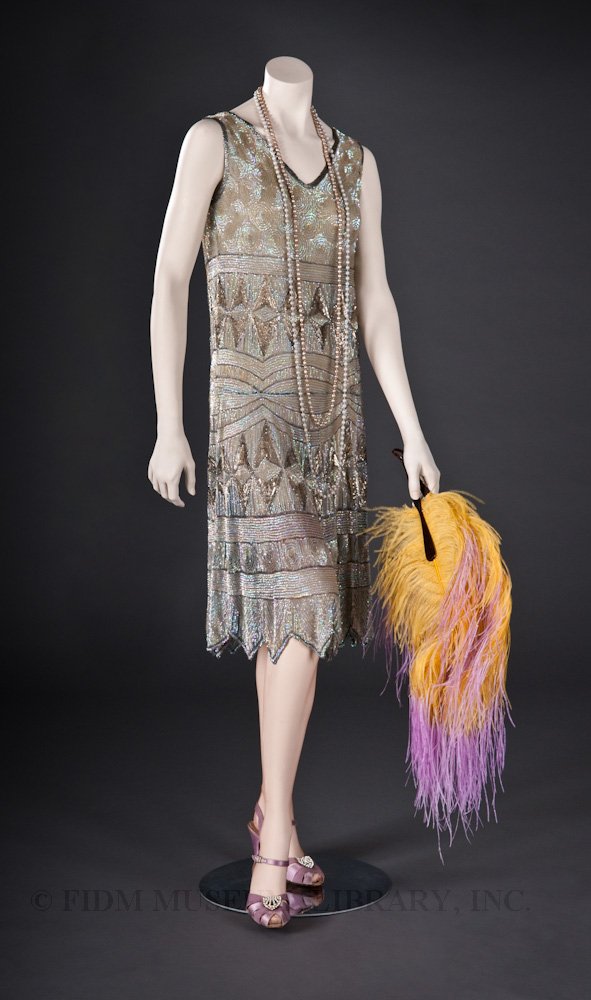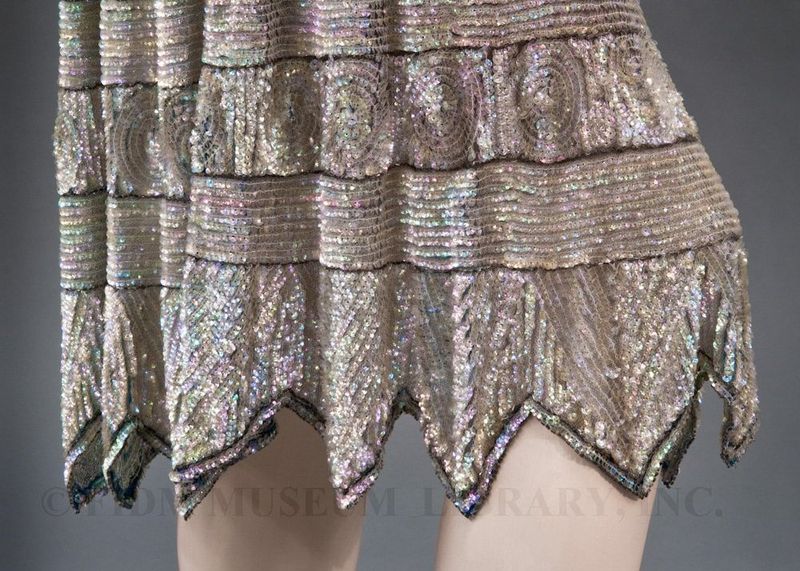Evening dress, c. 1926
No matter what your feelings about director Baz Luhrmann's new cinematic adaption of F. Scott Fitzgerald's classic American novel The Great Gatsby, you can't deny that the film is generating interest in 1920s fashion. Though reaction to the film itself has been mixed, retailers, fashion bloggers, and magazine editorials all display symptoms of Gatsby fever. Retail collaborations pay homage to the era while also promoting the film. The Great Gatsby, a new collection from Tiffany & Co., features sparkling jewelry designed in collaboration with The Great Gatsby's costume designer Catherine Martin. Brooks Brothers has also introduced new styles based both on 1920s menswear, and the new film version of Gatsby. Though it remains to be seen how much the film and its costumes will affect mainstream fashion, it's interesting to see fashion history encroaching on popular culture.

Evening dress
c. 1926
France
Gift of Roxanne Wilson
2003.1.2
Dazzling shift dresses, like the beaded and sequined dress seen here, are the most iconic of 1920s garments. Though women of the 1920s did have other evening dress options, glittering, embellished shifts were bewitching, and the flat, two-dimensional silhouette was radically new. Appreciation for voluptuous bodies was replaced by adoration of adolescent-like figures. Body-baring fashions were all the rage; sleeveless styles showed toned arms, while raised hemlines revealed bony knees. With this new silhouette, elasticized undergarments replaced the rigid, boned corsets that had dominated and shaped women's fashion throughout the 19th and early 20th centuries.
This couture-quality dress was entirely hand-embroidered to shape. A tambour hook—a small embroidery tool—was used to affix minute metal and iridescent gelatin sequins, as well as glass bugle beads, to a foundation of silk netting in concentric and geometric shapes. The opposing planes of silvery decoration mimic the Art Deco era's love of machine-polished and faceted chrome steel.
Nineteen-twenties evening dress was made for movement, and eveningwear was designed with the dance floor in mind. New dresses demanded new dances, and frenetic dances like the Charleston and the Blackbottom ruled the dance floor. Weighted with beads and sequins, the saw tooth hem of this dress would have swung wildly as its wearer shimmied on the dance floor. Some vigorous dancers literally shook the embellishment off their dresses. According to a brief 1926 article, "Sparkling sequins...give a shimmering effect on the dance frocks in London's ballrooms, but after the dances are over the floor sweepers have a busy time clearing [sequins] up from the floor."1
Another 1927 article described a tragic, unexpected danger associated with sequined dresses: electrocution.2 As the 20-year-old Folies Bergere actress Cosette Gaillard exited the stage, the hem of her sequin-embellished white dress came in contact with a frayed live wire. The metal sequins conducted "200 volts" through her body, and she was knocked unconscious. Gaillard woke for a brief time, but died in hospital the next morning.
1 "Sparkling Sequins for Dance Frocks." The Washington Post (Dec. 5, 1926) A5.
2 "Folies Bergere Wire Kills Actress." New York Times (Sept. 7, 1927) 31.
